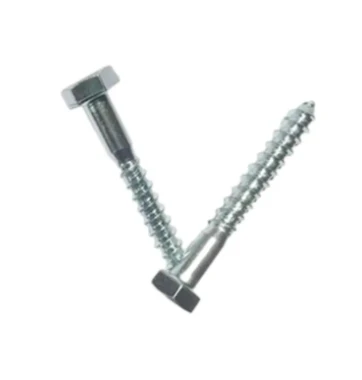nov. . 25, 2024 08:05 Back to list
Hex Nut Size Specifications and Measurement Guide for Accurate Selection
Understanding Hex Nut Dimensions A Comprehensive Guide
Hex nuts are essential components used in a variety of mechanical and structural applications. Their hexagonal shape allows for efficient tightening using standard tools, making them a popular choice in construction, automotive, and machinery contexts. Understanding hex nut dimensions is crucial for engineers, designers, and DIY enthusiasts alike, as selecting the right nut is integral to ensuring the stability and safety of a project. This article will explore the standard dimensions of hex nuts, their application, and how to choose the appropriate size for your needs.
What Are Hex Nuts?
Hex nuts are fasteners with a hexagonal (six-sided) shape that allows them to be easily tightened or loosened using a wrench. They are typically used in conjunction with bolts, providing a secure connection between two or more components. The internal threads of the hex nut correspond to the size and pitch of the bolt’s threads, which facilitates a strong and reliable connection.
Hex Nut Dimensions
In order to select the right hex nut, understanding its dimensions is critical. Here are the key dimensions that are typically noted in a hex nut dimension chart
1. Width Across Flats (WAF) This dimension refers to the distance between two opposite flat sides of the hexagon. It is essential for determining the size of the wrench needed for installation and removal.
2. Thickness (T) This dimension measures the height of the nut from the top to the bottom. It varies depending on the nut's grade and application but generally stays consistent within specific standard specifications.
3. Inner Diameter (ID) The inner diameter is the measurement of the hole at the center of the nut, which accommodates the bolt. This diameter must align closely with the bolt's outer diameter to ensure a secure fit.
4. Thread Pitch The thread pitch is the distance between adjacent threads on the bolt and should match the thread specification of the hex nut. This is a critical dimension as mismatched pitches can lead to stripping and poor connections.
Material Considerations
hex nut dimensions chart

Hex nuts are available in various materials which can affect their dimensional properties. Common materials include steel, stainless steel, brass, and nylon. Steel nuts are often chosen for their strength and durability, while stainless steel is preferred in corrosive environments due to its resistance to rust. It is important to choose the material based on the specific application and environmental conditions.
Application of Hex Nuts
Hex nuts are widely used in many industries, including automotive, construction, and manufacturing. They provide secure fastening in machinery, hold together structural components, and are integral to any assembly requiring strength and reliability. In automotive applications, the right hex nut dimensions ensure safety and performance, especially in critical engine and suspension components.
Choosing the Right Hex Nut
When selecting a hex nut, it is essential to consider the following steps
1. Identify the Bolt Size The first step in selecting a hex nut is determining the size of the bolt it will be used with. This includes the diameter and thread pitch.
2. Refer to a Dimension Chart Use a hex nut dimension chart to match the bolt size with the appropriate nut size, ensuring compatibility.
3. Consider the Load Requirements Depending on the application, consider the load requirements and choose a nut grade that will handle the stress it will encounter.
4. Material Selection Choose a material that meets the environmental and operational needs of your project.
In conclusion, hex nuts play a vital role in creating secure connections across various applications. By understanding hex nut dimensions and their implications in real-world applications, you can make informed decisions that enhance the safety and integrity of your projects. Always consult reliable dimension charts and specifications to ensure optimal results in your assembly endeavors.


